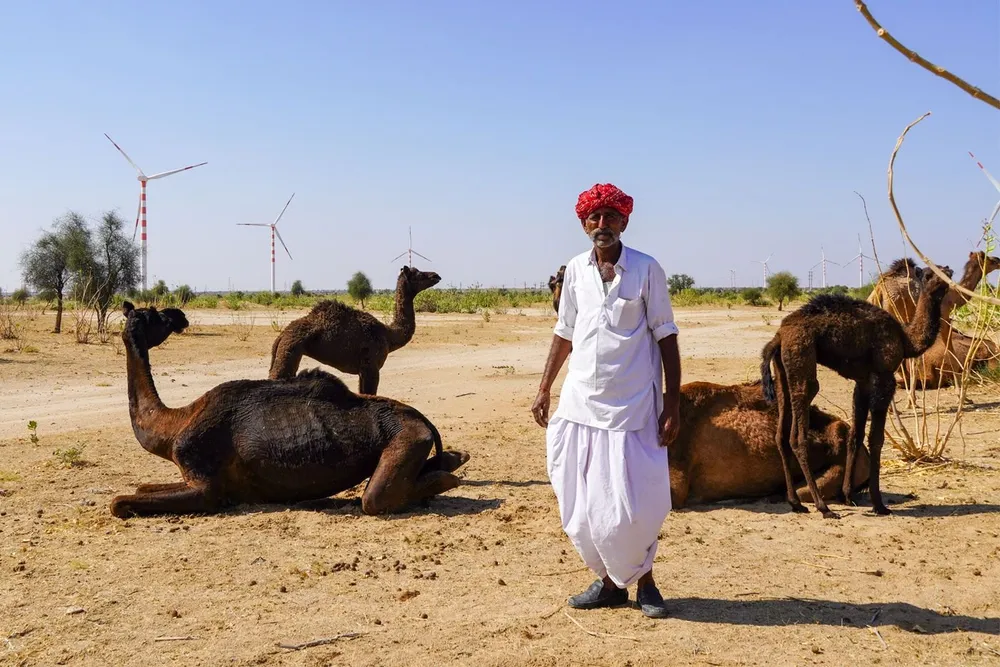Rare raptor mortality detected in desert where hybrid renewables are booming
Adani Group is leading a massive renewables expansion in India's Jaisalmer region, but research raises alarm on biodiversity in the region

A study of bird mortality in India’s Thar desert — a growing hotspot for renewable energy — has found that wind turbines are threatening several endangered species, raising questions about the wider impacts of India's aggressive expansion plans for renewable energy.
Bird mortality has been closely monitored in wind power markets in North America, Europe and Australasia, but less research is available in tropical environments of the global south.
Of the bird deaths attributed to turbine impacts, nearly 40% were raptors, including globally endangered species such as the white-rumped vulture, tawny eagle, and laggar falcon.
No carcasses were found at nearby control sites without turbines, supporting researchers' findings about the role that wind infrastructure played in the deaths.
The Thar desert also overlaps with the known range of the critically endangered great Indian bustard.
Imminent risk of extinction
The propensity of raptors to hitch a ride on thermal updrafts was also identified as a factor behind the preponderance of mortalities from this family, along with the reduced maneuverability of larger species.
"Raptors also use open habitats with good visibility for foraging that are also suitable sites for wind turbines," the researchers noted.
Such mortality rates may have serious population-level impacts particularly for endangered species they added, citing other research suggesting that declines in breeding populations of raptor and other birds have been observed following wind turbine installations.
In the Indian study, the rate of bird deaths varied in response to different topographical features and turbine height. The researchers also found that taller turbines were associated with higher mortality rates, suggesting hub height was a critical factor in collision risk.
Adani's huge hybrid projects
India is aiming to lift its wind power capacity to as much as 140GW by 2030 - more than double current capacity - and the Jaisalmer region of Rajasthan state, where the Thar desert is located, has attracted major investments in both wind and solar, especially from India's Adani Group.
The Indian conglomerate, through its Adani Green Energy arm is in the process of building gigawatt scale hybrid wind and solar projects in the region.
In their conclusions, the researchers urged policy makers to consider excluding critical habitats for raptors, bustards, and other threatened species when planning future wind installations.
"While India’s wind energy has grown annually by around 15% in the recent past, their ecological impacts have not been assessed systematically," the study noted.
The researchers also advocated large-scale testing of mitigation measures such as painting half of one blade black, plus consideration for other innovations, such as systems designed to detect birds and thus shut down turbines in time to avoid collision.
"Proper siting and mitigation would help in ensuring that the exponential growth of wind energy is not at odds with its environment-friendly ethos," they concluded.
(Copyright)